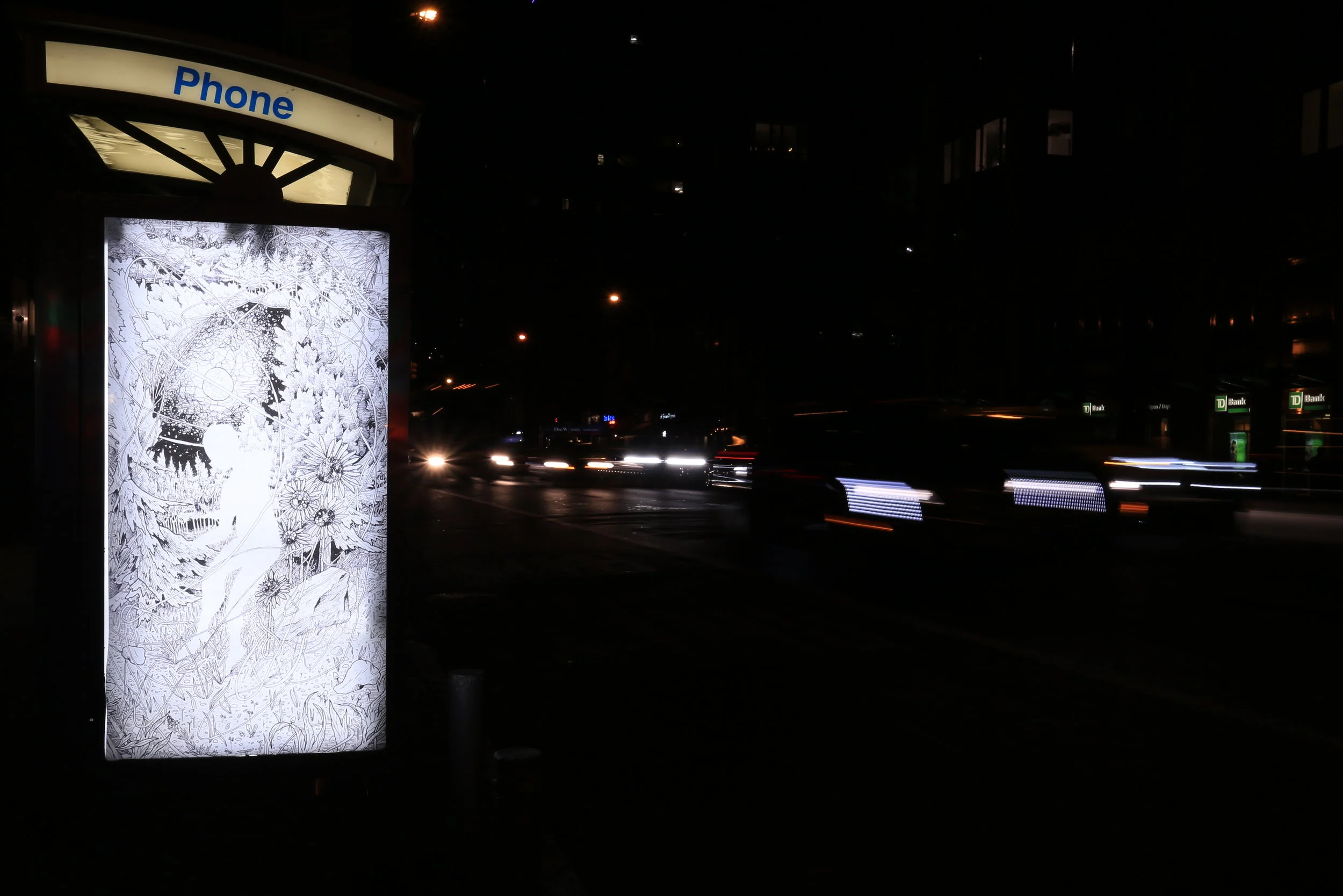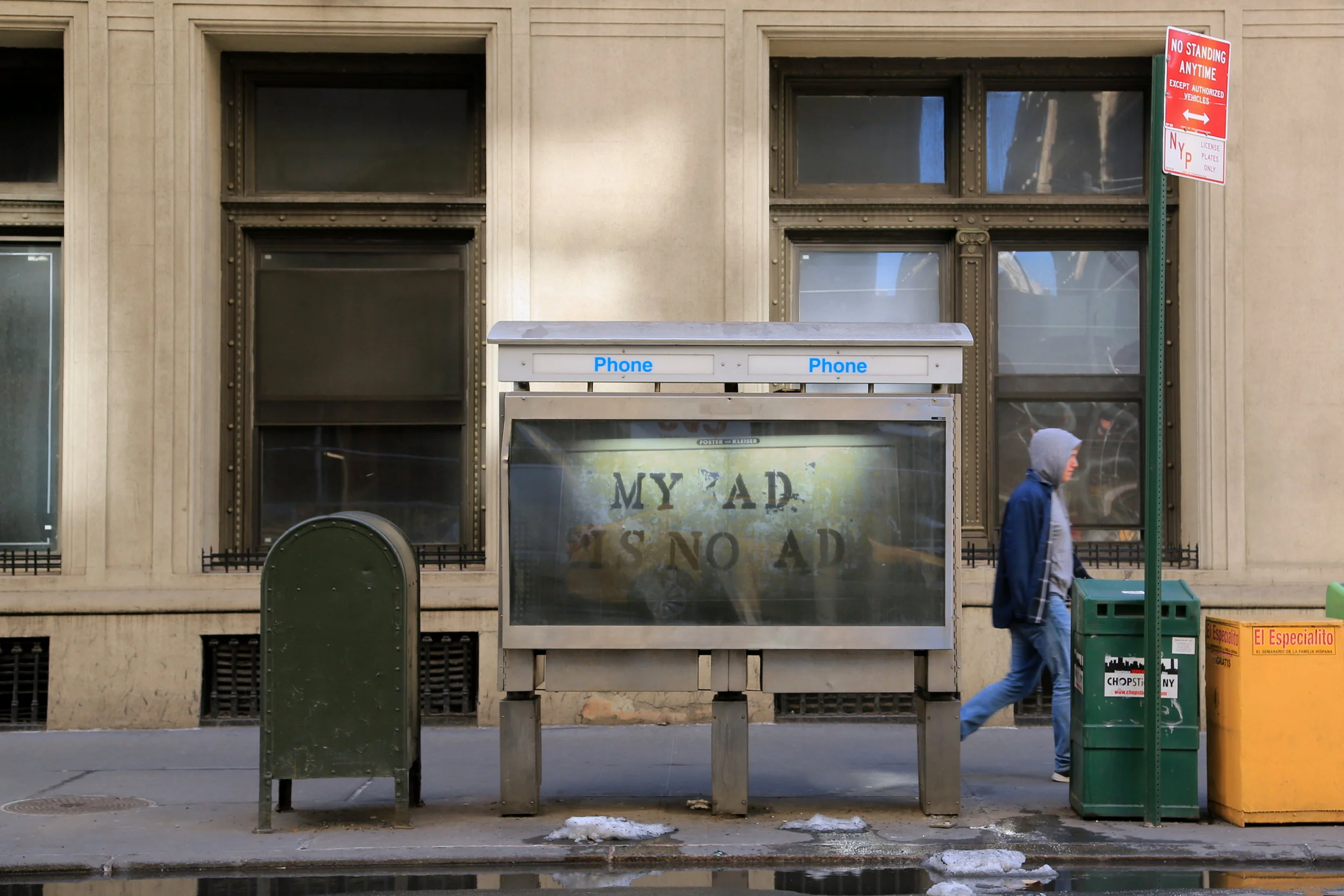Stop Telling Women to Smile by Tatyana Fazlalizadeh. Photo by Luna Park.
This week is International Anti-Street Harassment Week, so we thought we would do our part by installing a poster from Tatyana Fazlalizadeh's Stop Telling Women To Smile campaign. The campaign has been an inspiration to the Art in Ad Places team for years, and really gets at the heart of what AiAP is about. Here's a bit about the campaign, and this particular poster, from Fazlalizadeh:
Stop Telling Women to Smile is one piece in a series of work about gender based street harassment. This work is challenging sexism in public spaces by taking the faces and voices of women and placing them in the environment that so often is hostile and dangerous for us: the street.
Much like Stop Telling Women to Smile, AiAP is about making environments where public space can be enjoyed, rather than endured. No person should have to face cat-calling and other street harassment, or be subjected to advertisements that create and exploit low self esteem. Fazlalizadeh hits the nail on the head, saying "Art in Ad Places is important for work like this because it replaces the sometimes damaging images from advertisers with artwork by artists and activists that can provide beauty and solace for passersby."
If you want to get involved in the Stop Telling Women to Smile campaign yourself, you can: Friday night is Stop Telling Women to Smile's 4th annual International Wheatpasting Night. Have fun and stay safe!
And, as always, if you want to get involved in ad takeovers, you can visit our recently-updated Take Action page for info on how to get started.










